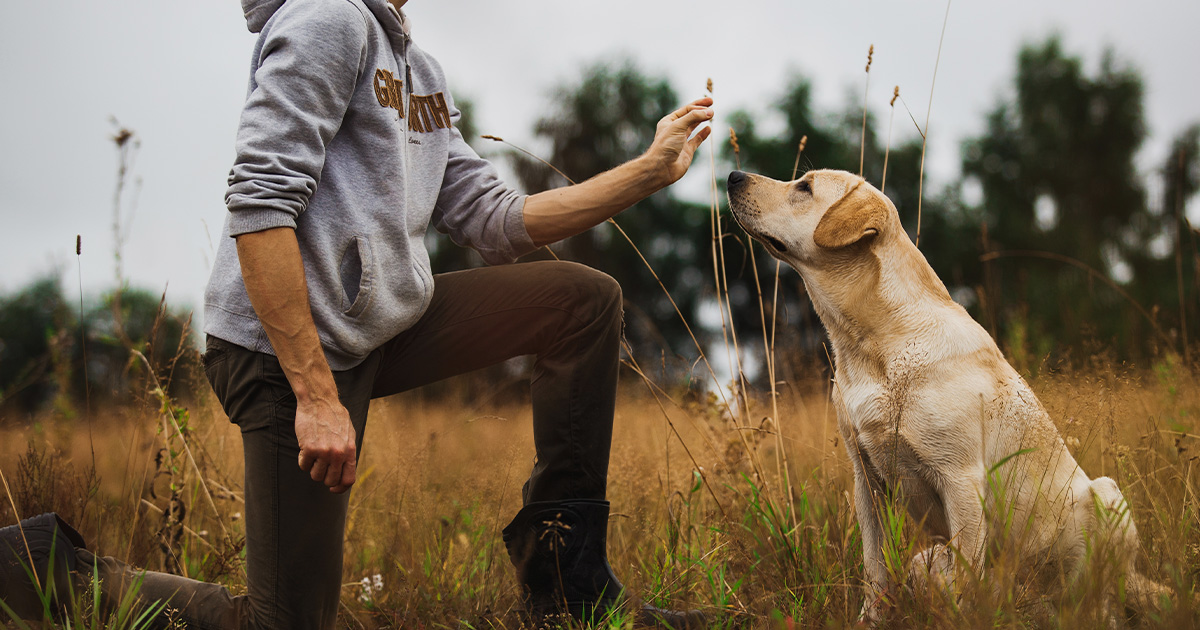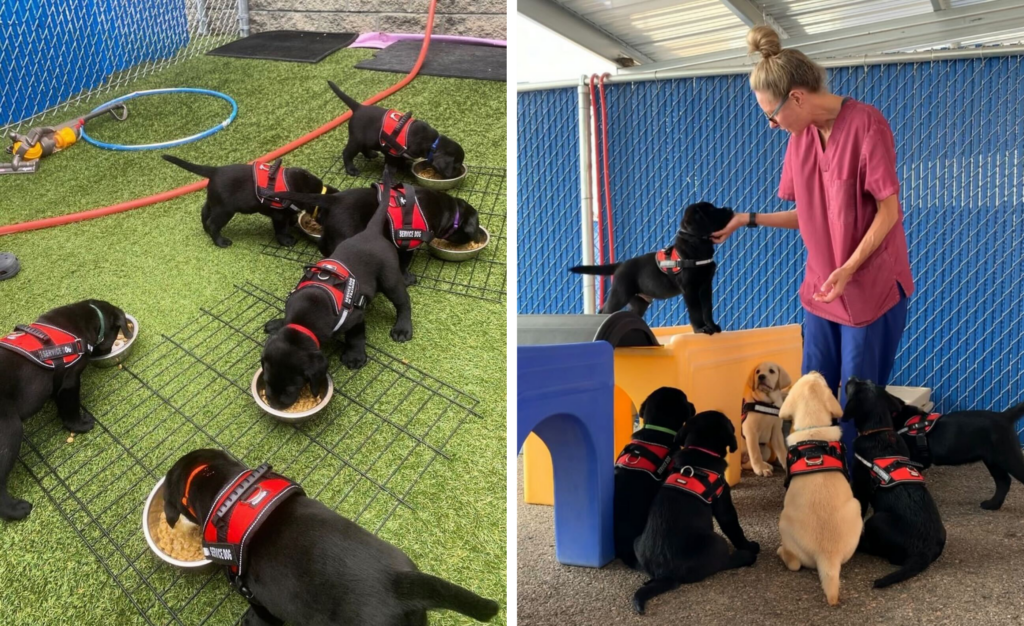Dog Training Near Me: Find Local Experts for Customized Training Programs
Dog Training Near Me: Find Local Experts for Customized Training Programs
Blog Article
Newbie's Overview to Effective Canine Training in the house
Effectively training a pet at home needs a nuanced understanding of canine actions and effective interaction approaches. Establishing clear training objectives, utilizing high-grade incentives, and keeping consistency across member of the family are critical elements. Moreover, integrating training right into daily routines can enhance both interaction and retention. Nevertheless, several amateur fitness instructors encounter obstacles that might hinder progression. To navigate these intricacies successfully, it's necessary to discover several key facets that can change your technique and bring about a harmonious relationship with your animal. What basic principles should every beginner grasp to make certain success?
Understanding Pet Habits
Understanding pet habits is vital for effective training and fostering an unified partnership between people and their canine companions - Puppy Training. Pets connect primarily via body language, articulations, and faces, making it vital for owners to analyze these signals precisely. Acknowledging habits such as tail wagging, grumbling, or cowering can supply insights right into a pet dog's emotion and intents
In addition, comprehending the all-natural instincts of dogs, such as their pack way of thinking, assists owners develop management functions within the house. This is crucial for creating an organized setting where pet dogs feel safe and are more receptive to training. Pet dogs are additionally influenced by their socialization experiences; very early direct exposure to various atmospheres, people, and other animals can considerably form their habits later on in life.
Common behavior concerns, such as aggressiveness, stress and anxiety, or extreme barking, often stem from misunderstandings or unmet needs. Observing and attending to these concerns promptly can avoid acceleration and make certain a positive training experience. By fostering a deep understanding of pet dog habits, owners can tailor their training approaches to suit their canine companions, ultimately resulting in a happy and mannerly pet dog.

Vital Training Devices
A well-appointed training area can considerably enhance the performance of pet training in your home. Vital training tools ensure that both the pet dog and the fitness instructor can take part in efficient sessions that foster understanding and bonding.

Investing in a sturdy chain and a comfy, well-fitting collar or harness is crucial for security and control. These tools aid develop borders and make certain the pet dog stays protected during training. Additionally, a designated training area, devoid of distractions, aids concentration for both the trainer and the dog.
Educating help such as training pads, cones, or agility equipment can also boost the experience by presenting range and challenges. Last but not least, having a note pad or digital app for tracking progression can be invaluable, allowing you to keep in mind successes and locations for improvement. Using these vital tools will certainly produce a favorable training atmosphere and lay the structure for efficient discovering.
Producing a Training Regimen
Establishing a consistent training routine is necessary for reliable pet dog training in your home. A well-structured routine not only aids in strengthening wanted behaviors but also provides your dog with a feeling of safety and security and predictability. To develop an efficient training regular, begin by recognizing particular training objectives, such as basic commands, leash strolling, or house-breaking.
Pick an assigned time daily for training sessions, ideally when your pet dog is sharp and receptive. Sessions should be brief, about 5 to 15 minutes, to preserve emphasis and prevent fatigue. Consistency in timing and environment will boost your dog's knowing experience.
Include training into everyday activities to strengthen skills. Method commands throughout walks or nourishment, which integrates finding out right into all-natural routines. In addition, continue to be flexible and readjust the regular as necessary, accommodating your dog's energy degrees and state of mind.
Favorable Reinforcement Methods

When applying positive support, it read what he said is vital to choose incentives that are motivating for your pet dog. High-value treats, such as tiny pieces of chicken or cheese, can be particularly reliable during training sessions. Furthermore, varying the incentives can keep your pet dog's rate of interest and interest.
Begin with simple commands, like "rest" or "stay," and slowly progression to extra complicated jobs. Consistency is key; make certain that all relative use the same commands and benefit systems to prevent confusion.
Additionally, it is important to continue to be person and avoid stress. Dogs, like humans, discover at their own pace. By promoting a helpful training setting with favorable reinforcement, you can boost your pet's learning experience while strengthening the bond between you and your fuzzy friend, laying the foundation for successful training results.
Usual Training Difficulties
While educating a dog in your home can be a rewarding experience, it typically comes with a set of usual challenges that can evaluate both perseverance and consistency. One common problem is disturbance. Canines may come to be conveniently averted by sounds, motions, or also aromas in their setting, making it hard to keep their focus throughout training sessions.
One more obstacle is incongruity in commands and support. It can perplex the dog and prevent progression if family members make use of various cues or incentives. Developing a unified strategy is essential for reliable interaction.
Additionally, canines can experience stress or stress and anxiety, specifically if they do not comprehend what is anticipated of them. This can cause undesirable actions, such as barking or chewing.
Lastly, the timing of support is vital. Postponed benefits can diminish the efficiency of positive reinforcement, as pets may fail to connect the actions with the reward.
Conquering these difficulties great post to read calls for dedication, clear interaction, and an organized training plan - Puppy Training. Acknowledging and attending to these common obstacles will certainly pave the way for a more effective and enjoyable training experience in the house
Conclusion
In final thought, effective dog training at home requires an extensive understanding of canine behavior and effective interaction strategies. By establishing clear training objectives and using high-grade treats together with positive reinforcement, the training process comes to be a lot more satisfying for both the canine and the trainer.
Establishing a regular training routine is necessary for reliable pet training at home.Positive support techniques are basic to effective canine training, promoting wanted actions with incentives instead than penalty. By cultivating a supportive training atmosphere via positive reinforcement, you can improve your pet dog's discovering experience while reinforcing the bond between you and your furry buddy, laying the groundwork for successful training outcomes.
In final thought, effective canine training at home necessitates an extensive understanding of canine behavior and efficient interaction methods. By establishing clear training goals and utilizing premium treats together with favorable reinforcement, the training process ends up being extra fulfilling for both the trainer and the pet.
Report this page